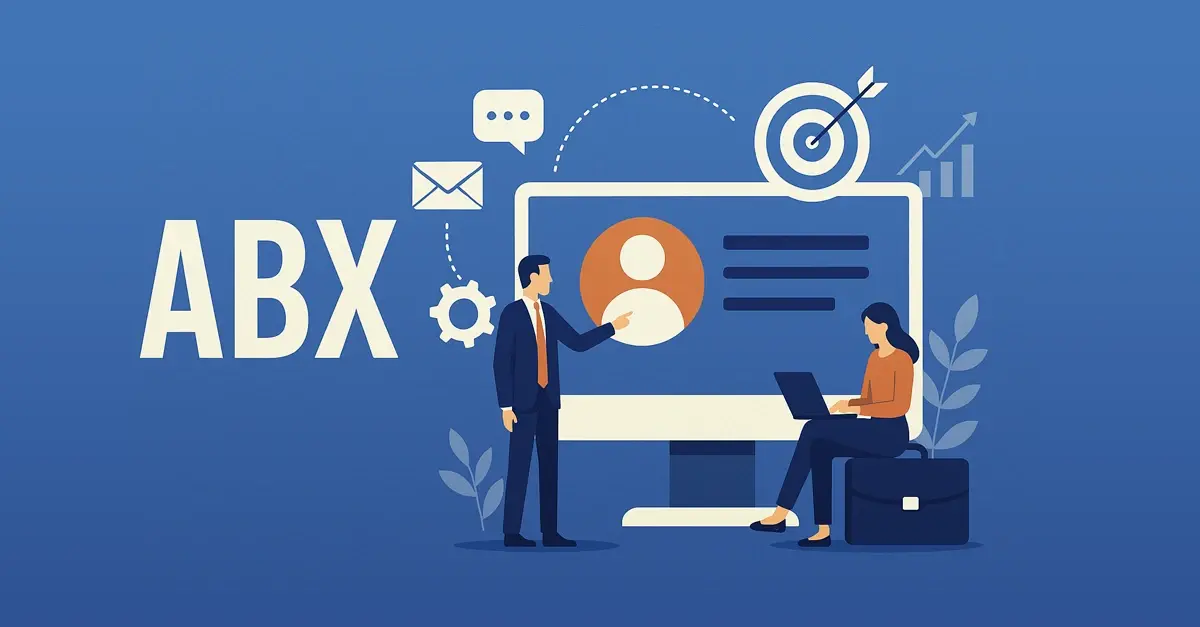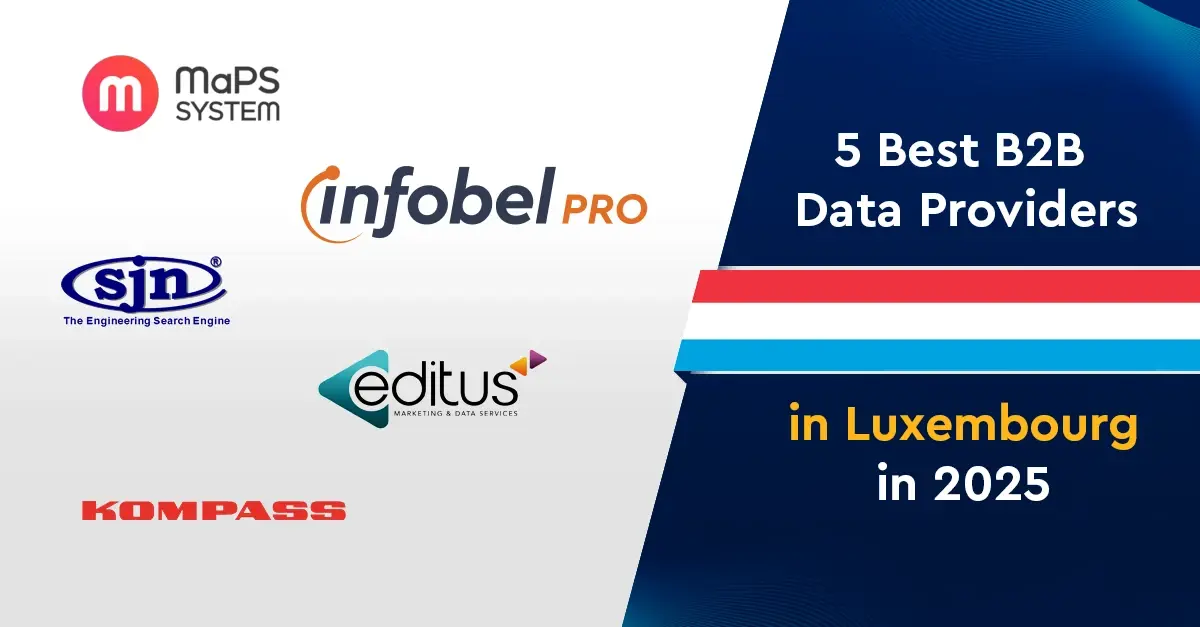Have you ever found yourself subscribing to a free online webinar, or perhaps stumbling upon an article so captivating that you couldn't resist clicking on the notification button to stay updated on new releases?
You've probably been tempted by a limited-time offer for a product, and you don't want to miss out on its discounted sales.
If you answered yes to any of these events, then you're part of the millions who have responded to lead generation tactics.
Lead generation is so important that no organization can afford to overlook it because, without it, every other aspect of the sales funnel will fall apart.
Some of the reasons why lead generation is vital for every organization are that it eliminates aimless spending on prospects who may not convert into paying customers and helps in deciding which strategy works and which one to knock off.
Additionally, lead generation provides valuable insights into what prospects are looking for, enabling organizations to tailor their offerings to meet those needs and ultimately convert leads into paying clients.
Utilizing effective lead generation tools, organizations know what to do and how to do it effortlessly. But what exactly is lead generation?
What is Lead Generation?
Lead generation is as sequence of actions and steps that companies do in order to target and reach potential prospects, who inquire about their products and services, and the final purpose of lead generation is to convert these inquisitive prospects into paying and repeat customers.
For every organization that plans on growing, making sales, and out-beating its competitors, lead generation should be an important element of their company’s culture and should be taken seriously, whether they operate as a B2B or B2C business.
Lead generation allows businesses to develop strategies and ways to retain prospects because it gives them insight into what their ideal customers are looking for, what grabs their attention, and through which mediums (blogs, emails, social media, seminars, and webinars) they are engaging with the company.

What are Lead Generation Tools?
Lead generation tools simplify and automate the task of drawing in, capturing, and organizing information about potential customers. These tools make it much easier to attract, engage with, and turn interested people into leads, significantly aiding the sales process. By automating key aspects of lead generation, companies can more effectively identify and interact with their target audience. Usually, this type of software is designed to work seamlessly with other systems, saving users from the hassle of having to juggle multiple browsers. This is incredibly beneficial for sales teams, as it cuts down on the time spent dealing with uninterested prospects and aids in building a more solid base of potential customers.
Core Features of Lead Generation Tools
The main feature of lead generation is for organizations to attract quality leads that can be converted into paying customers. To attract good leads, there are tools and software organizations can use.
These tools come with different features designed to simplify the lead-generation process. Some key features of lead generation tools include:
- Lead Capture Forms:
Lead generation tools typically include customizable forms that can be embedded on websites, landing pages, or social media platforms to collect contact information such as names, email addresses, and phone numbers from those who have interacted with the site. - Automated Email Marketing:
Lead generation tools frequently include email marketing (email marketing tool: https://get.infobelpro.com/) features like automated email sequences, drip campaigns, and personalized messaging to nurture leads and guide them through the sales funnel. - Landing Page Builders:
Many lead generation tools include landing page builders that use lead capture-optimized templates. These landing pages frequently include features like A/B testing, customization options, and integration with email marketing platforms. - CRM Integration:
Integration with Customer Relationship Management (CRM) systems enables businesses to easily transfer lead data captured by the tool into their CRM for further nurturing and tracking. - Lead Scoring:
Lead scoring features help sales teams prioritize leads based on their likelihood to convert, allowing them to focus their efforts on leads that are more likely to result in a sale. - Analytics and Reporting:
Lead generation tools provide information about the performance of lead generation campaigns, such as conversion rates, click-through rates, and ROI, allowing businesses to optimize their strategies. - Social Media Integration:
Some lead-generation tools integrate with social media platforms, allowing businesses to capture leads directly from these channels and interact with prospects in real time. - Multi-channel Marketing:
Lead generation tools can support a variety of channels, including email, SMS, social media, and paid advertising, giving businesses a comprehensive approach to reaching and engaging with their target audience. - Lead Qualification:
Advanced lead generation tools may include lead qualification elements that automatically assess the quality of leads based on predefined criteria, helping sales teams concentrate on the most promising opportunities. - User-Friendly Interface:
Users can easily navigate the tool, create campaigns, track leads, and analyze results with intuitive interfaces and user-friendly dashboards that do not require extensive technical expertise. - APIs and Integrations:
Lead generation tools frequently provide B2B APIs and integrations with other marketing and sales tools, allowing businesses to create custom workflows and automate processes throughout their tech stack. - Lead Magnet Creation:
Some tools allow you to create lead magnets, such as ebooks, whitepapers, webinars, or other valuable content, to encourage lead capture.
What are the Tools needed for Lead Generation?
Lead generation is the cornerstone of any successful marketing strategy, serving as the initial step in the conversion funnel towards acquiring potential customers. In today's digitally-driven landscape, where competition is fierce and consumer behavior constantly evolves, having the right tools at your disposal is crucial for effective lead generation.
From identifying prospects to nurturing them into qualified leads, a diverse array of tools exists to streamline and optimize this process.
In this article, we delve into the essential tools needed for successful lead generation, exploring their functionalities and how they contribute to generating quality leads for businesses across various industries.

#1. Website Visitor Identification Tools:
- Leadfeeder:
Leadfeeder is a software tool designed to help businesses identify website visitors and turn them into sales leads.
It works by tracking website traffic and providing information about the companies that visit a website, including their contact details and browsing behavior. - Overloop (formerly Prospect.io):
Overloop is a sales automation platform that helps businesses streamline their outbound sales processes.
It offers features such as email prospecting, email tracking, and drip campaigns to help sales teams generate leads, nurture relationships, and close deals more effectively.
With Overloop, users can create personalized email campaigns, track email opens and clicks, and manage their prospect lists all within one platform. - D & B Hoovers:
D & B Hoovers is a comprehensive sales intelligence platform provided by Dun & Bradstreet, a leading global provider of business data and analytics solutions. D&B Hoovers offers a vast database of company profiles, industry insights, and contact information to help sales and marketing professionals identify and connect with potential customers.
#2. Landing Page and Form Builders:
- OptinMonster:
OptinMonster is a powerful lead generation and conversion optimization tool used by businesses to grow their email lists and increase website conversions.
It offers a variety of features and tools designed to capture visitors' attention, engage them, and encourage them to take desired actions on a website. - Unbounce:
Unbounce is a popular landing page builder designed to help businesses create and optimize landing pages for their marketing campaigns without needing coding skills.
It offers a range of features to streamline the process of building high-converting landing pages and improving campaign performance. - Instapage:
Instapage is a leading landing page platform that enables businesses to create, personalize, and optimize landing pages for their marketing campaigns.
It provides a range of features and tools to help marketers maximize conversions and achieve their campaign goals effectively.
#3. Email Marketing Tools:
- GET application:
This tool enables you to create mailing lists of potential prospects you would like to reach and export them as an Excel file with all the business details you need about them (company, revenue, number of employees, and 800 more). You can perform very advanced selections and target particular groups of prospects. You can easily use such a list in your mailing campaign. - Mailchimp:
Mailchimp is a leading landing page platform that enables businesses to create, personalize, and optimize landing pages for their marketing campaigns.
It provides a range of features and tools to help marketers maximize conversions and achieve their campaign goals effectively. - Constant Contact:
Constant Contact is a popular email marketing platform that helps businesses create, send, and track email campaigns to engage with their audience and drive results.
It offers a variety of features and tools to streamline the email marketing process and improve campaign effectiveness. - HubSpot:
HubSpot is a comprehensive inbound marketing and sales platform that provides tools and solutions for businesses to attract visitors, convert leads, and close customers.
It offers a wide range of features across marketing, sales, and customer service to help businesses grow and manage their relationships with customers effectively
#4. SEO Tools:
- Ahrefs:
Ahrefs is an all-in-one SEO (Search Engine Optimization) toolset that provides comprehensive solutions for keyword research, backlink analysis, competitor analysis, content research, and rank tracking.
It is widely used by marketers, SEO professionals, and website owners to improve their search engine rankings, increase organic traffic, and optimize their online presence. - SEMrush:
SEMrush is a comprehensive digital marketing platform that provides tools and solutions for SEO, PPC advertising, content marketing, social media management, and competitive analysis.
It is widely used by marketers, SEO professionals, and businesses to improve their online visibility, drive traffic, and optimize their digital marketing strategies. - Moz:
Moz is a prominent software company offering a suite of tools and resources focused on search engine optimization (SEO) and digital marketing.
Moz's tools and resources are widely used by marketers, SEO professionals, and businesses to improve their online visibility, drive organic traffic, and enhance their overall digital presence.
#5. Social Media Tools:
- Sprout Social:
Sprout Social is a social media management platform that helps businesses manage and optimize their presence on social media channels.
It offers a suite of tools for social media scheduling, publishing, monitoring, analytics, and engagement, allowing users to effectively manage their social media accounts and engage with their audience. - Hootsuite:
This is a social media management platform that helps businesses and organizations manage their social media presence across multiple platforms. - Buffer:
Buffer is a social media management platform that enables businesses and individuals to schedule, publish, and analyze content across various social media platforms.
#6. Webinar and Event Tools:
- Livestorm:
Livestorm is a cloud-based webinar and video conferencing platform designed for businesses to host online events, webinars, virtual meetings, and online training sessions.
It provides a range of features and tools to facilitate engaging and interactive online experiences for participants. - GoToWebinar:
This is a popular webinar hosting platform designed for businesses and organizations to conduct online presentations, training sessions, and events.
It offers a range of features and tools to facilitate seamless webinar hosting and engaging audience interactions. - Zoom:
This is a widely used video conferencing and online meeting platform that enables users to host and participate in virtual meetings, webinars, and collaborative sessions.
Other Lead Generation Tools:
- Typeform:
Typeform is an online platform that allows users to create and design interactive forms, surveys, quizzes, and other types of online forms in a visually appealing and engaging way.
It is known for its user-friendly interface, customizable design options, and seamless user experience. - LinkedIn Sales Navigator:
LinkedIn Sales Navigator is a subscription-based sales tool offered by LinkedIn, the professional networking platform.
It is designed to help sales professionals, marketers, and business development professionals find and engage with potential prospects and customers more effectively. - Google Ads:
Google Ads is an online advertising platform developed by Google that allows businesses to display ads on Google's search engine results pages (SERPs), as well as on Google's advertising network.
It is one of the most popular and widely used advertising platforms for businesses looking to reach their target audience and drive traffic to their websites. - Intercom:
Intercom is a customer messaging platform that enables businesses to engage with their customers through live chat, email, and other messaging channels.
It offers a suite of tools designed to facilitate personalized communication, support, and marketing automation, helping businesses build better relationships with their customers. - Calendly:
Calendly is an online scheduling tool that simplifies the process of booking appointments and meetings.
It allows users to create personalized scheduling links that they can share with clients, colleagues, or anyone else who needs to schedule time with them.
Recipients can then select a time slot from the user's availability, eliminating the back-and-forth communication typically involved in scheduling.
B2B Lead Generation Tools
One of the things that the B2B ecosystem has in abundance is tools that they can use to generate leads.
From analytic platforms to CRM, the array of B2B lead-generating tools continues to grow, catering to the ever-changing demands of the B2B ecosystem.
In this era of data-driven decision-making, these tools provide actionable insights, streamline workflows, and enhance the overall effectiveness of marketing and sales.
Let's check out some of the B2B lead-generating tools that are trending:
#1. Visitor Tracking:
- Visitor Queue:
Visitor Queue is a B2B lead generation software that helps businesses identify the companies visiting their website and gather valuable information about those visitors.
It offers a range of features to track website visitors, generate leads, and enhance sales and marketing efforts. - Hunter.io:
Hunter.io is a B2B lead generation software that helps businesses identify the companies visiting their website and gather valuable information about those visitors.
It offers a range of features to track website visitors, generate leads, and enhance sales and marketing efforts. - Tawk.to:
Tawk.to is a tool that provides live chat software for websites, enabling businesses to engage visitors and capture leads in real time. - CallPage:
CallPage is a tool that offers a callback widget for websites, allowing visitors to request a callback and become leads. - AeroLeads:
AeroLeads is a tool that helps businesses find and qualify leads through email and phone number lookup services. - Hoovers:
Hoovers provide business information and contact data to help with lead generation and sales prospecting.
#2. Email Marketing:
- Constant Contact:
Constant Contact is an email marketing platform that helps businesses create, send, and track email campaigns to engage with their audience, promote products or services, and drive conversions.
It offers a range of features to help businesses build and manage email lists, design professional-looking emails, and analyze campaign performance. - AWeber:
AWeber is a tool that provides email marketing and automation tools for businesses to engage and convert leads through targeted campaigns.
#3. CRM (Customer Relationship Management):
- HubSpot:
HubSpot is a leading customer relationship management (CRM) platform that offers a suite of tools and software for marketing, sales, customer service, and content management.
It is designed to help businesses attract, engage, and delight customers at every stage of the customer journey. - Pipedrive:
Pipedrive is a customer relationship management (CRM) software designed to help sales teams manage leads, track deals, and automate sales processes.
It offers a range of features to streamline sales operations, improve efficiency, and drive revenue growth. - Salesforce (Pardot):
Salesforce (Pardot) is a marketing automation platform by Salesforce, offering lead management, email marketing, and analytics capabilities. - Marketo:
Marketo is a comprehensive marketing automation platform for lead generation, nurturing, and analytics. - Infusionsoft:
Infusionsoft offers CRM and marketing automation tools tailored for small businesses to generate and manage leads effectively.
#4. Lead Generation:
- ProProfs Chat:
ProProfs Chat is a live chat software designed to help businesses engage with website visitors and provide real-time support. It offers a range of features to facilitate communication, capture leads, and improve customer service. - LinkedIn:
LinkedIn is a powerful platform for B2B lead generation through targeted outreach, networking, and content marketing to engage with potential leads. - ClickFunnels:
ClickFunnels helps businesses create and optimize sales funnels to capture and convert leads effectively. - OptinMonster:
OptinMonster offers lead capture forms and pop-ups to convert website visitors into leads and customers. - Leadpages:
Leadpages helps businesses create high-converting landing pages to capture leads and drive sales. - Prospect.io:
Prospect.io is a sales automation platform that helps with lead prospecting, outreach, and follow-up.
#5. Automation:
- Zapier:
Zapier connects different apps and tools to automate workflows, including lead generation and management processes. - ActiveCampaign
ActiveCampaign provides email marketing, automation, and CRM tools to attract, nurture, and convert leads.
Sales Lead Generation Tools for the B2B Industry
Sales lead generation tools are essential assets for B2B sales teams striving to improve efficiency and attract high-quality leads.
In today's fiercely competitive market, leveraging advanced technology is crucial for maintaining a competitive edge.
These tools manifest in diverse forms, ranging from customer relationship management (CRM) platforms to email automation software and beyond.
The most suitable tools for your business will be determined by your budget, requirements, and industry specifics. It's crucial to conduct thorough research and select tools that align well with your business objectives. Below are some examples.
- Website capture tools:
Leadfeeder:
Leadfeeder is a tool that helps you identify companies that have visited your website and provide you with contact information for those companies.
Insycle:
Insycle is a tool that helps capture leads from your website and social media channels.
Drift:
Drift helps you chat with website visitors in real-time and convert them into leads. - Content marketing tools:
HubSpot:
HubSpot is an all-in-one marketing platform that includes tools for creating blog posts, landing pages, and email newsletters.
Leadpages:
Leadpages is a tool that helps you create high-converting landing pages.
Unbounce:
Unbounce is a tool that helps you create landing pages, pop-ups, and sticky bars. - Social media marketing tools:
LinkedIn Sales Navigator:
This tool helps you find and connect with potential customers on LinkedIn.
Sprout Social:
With Sprout Social, you will be able to manage your social media accounts and track your results.
Buzzsumo:
Buzzsumo is a tool that helps you find content that is popular on social media and share it with your audience. - Email marketing tools:
Mailchimp:
Mailchimp is an email marketing platform that is free for up to 2,000 subscribers.
Constant Contact:
Constant Contact is an email marketing platform that is easy to use and has a variety of features.
Drip:
Drip is an email marketing platform focused on e-commerce businesses. - Other tools:
Salesforce:
This CRM platform helps you manage your sales pipeline and track your leads.
Pipedrive:
Pipedrive is a CRM platform that is simple to use and affordable.
Zoho CRM:
Zoho CRM is a CRM platform that is free for up to 10 users.
Some of the Best Lead Generation Tools for Small Businesses
Lead generation is essential for the growth of any business, especially for small businesses aiming to expand their customer base.
Fortunately, in today's digital age, there are numerous tools available to help streamline and optimize lead generation efforts.
some of the best lead generation tools tailored for small businesses:
- Website Optimization and Lead Capture:
Heatmaps and Analytics:
Heatmaps and Analytics tools like Hotjar, Crazy Egg, and Lucky Orange show you how visitors interact with your website, helping you identify opportunities to improve conversion rates and capture leads.
Landing Page Builders:
Platforms like Unbounce, Leadpages, and Instapage enable you to create high-converting landing pages designed to capture leads through forms, CTAs, and offers.
Pop-up and Opt-in Forms:
Tools like OptinMonster, Sumo, and Privy allow you to create targeted pop-ups and opt-in forms to capture email addresses and other contact information. - Content marketing and Lead Magnets:
Email Marketing:
Platforms like Mailchimp, Constant Contact, and ActiveCampaign help you create and send email newsletters, campaigns, and automated sequences to nurture leads and drive conversions.
Content Management Systems (CMS):
Platforms like WordPress, HubSpot CMS, and Wix enable you to create and publish valuable content like blog posts, ebooks, and webinars that attract and engage potential customers.
Content Creation Tools:
Tools like Canva, Visme, and Loom help you create visually appealing and engaging content that resonates with your audience. - Lead Prospecting and Outreach:
Lead Generation Software:
Platforms like Leadfeeder, Hunter, and Snov.io help you find and identify potential leads, gather contact information, and personalize your outreach.
Social Media Management Tools:
Tools like Hootsuite, Buffer, and Sprout Social help you manage your social media presence, attract followers, and engage with potential leads.
Sales Automation Tools:
Platforms like HubSpot Sales, Pipedrive, and Zoho CRM help you streamline your sales process, manage leads, and automate tasks like email follow-ups.
Lead Generation Automation Tools
Businesses are constantly on the lookout, seeking ways to simplify their processes and maximize efficiency. One area where significant advancements have been made is in lead generation automation tools.
These innovative solutions not only simplify the tedious task of prospecting but also empower organizations to target and engage with potential customers more effectively than ever before.
Email marketing tools:
These tools help you create and send email campaigns to capture leads and nurture them into customers. Some popular options include Mailchimp, Constant Contact, Drip, and ActiveCampaign.
Landing page builders:
Landing page builders are tools that help you create high-converting landing pages that capture leads from your website. Some popular options include Unbounce, Instapage, Leadpages, and Wishpond.
Marketing automation platforms:
Marketing automation platforms offer a wider range of features, including email marketing, landing page creation, lead scoring, and analytics. Some popular options include HubSpot, Marketo, Pardot, and Eloqua.
Social media automation tools:
Social media automation tools help you manage your social media accounts and automate tasks such as scheduling posts and responding to comments. Some popular options include Hootsuite, Buffer, and Sprout Social.
Pop-up and form builders:
With these tools, you can create pop-ups and forms that capture leads on your website. Some popular options include OptinMonster, Sumo, and Leadformly.
Some AI Lead Generation Tools to look out for
AI lead generation tools are software programs that use artificial intelligence to automate and optimize the process of finding and qualifying potential customers.
These tools can be a valuable asset for businesses of all sizes, as they can help to save time and money while increasing the number of high-quality leads generated.
Here are some of the key benefits of using AI lead-generation tools:
- Increased efficiency:
AI tools can automate many of the tasks associated with lead generation, such as prospect research, data entry, and lead scoring. This frees up your sales team to focus on more high-value activities, such as closing deals. - Improved targeting:
AI can analyze large amounts of data to identify the ideal customers for your business. This allows you to target your marketing and sales efforts more effectively, which can lead to a higher conversion rate. - Personalized outreach:
AI can be used to create personalized messages and offers for each lead. This can help to build relationships with potential customers and increase the chances of them converting into paying customers. - Better lead scoring:
AI can score leads based on their likelihood to convert. This allows you to prioritize your sales efforts and focus on the leads that are most likely to close. - 24/7 availability:
AI chatbots can answer questions and qualify leads 24/7, even when your sales team is unavailable. If you are considering using AI lead-generation tools, here are some things to keep in mind:
- Cost:
AI lead generation tools can range in price from a few hundred dollars to several thousand dollars per month.
- Complexity:
Some AI lead generation tools are more complex than others. If you are not familiar with AI, you may want to start with a simpler tool.
- Data:
AI lead generation tools require data to work effectively. You will need to make sure that you have a good source of data, such as a CRM system or marketing automation platform.
Here are some popular AI lead-generation tools:
- Customers.AI:
Customer.AI utilizes AI to analyze customer data and behavior, helping businesses understand their audience better and generate qualified leads. - Meet Alfred:
Meet Alfred uutomates outreach and lead generation tasks, such as email campaigns and LinkedIn messaging, using AI-driven personalization. - Surfer SEO:
Surfer SEO provides AI-powered content optimization tools to improve search engine rankings and attract organic traffic, thereby generating leads through content marketing. - FastBots.AI:
FastBots.AI offers AI chatbots for website and social media platforms, engaging visitors and capturing leads through personalized interactions. - Kartra:
Kartra is an all-in-one marketing platform that uses AI for lead scoring, segmentation, and personalized marketing campaigns to drive conversions. - InboxPro:
InboxPro is an AI-powered email marketing platform that optimizes email content and timing to increase open rates and conversions, thus generating leads through email campaigns. - useArtemis:
This is an AI-driven sales automation platform that analyzes customer interactions and data to identify potential leads and optimize the sales process. - Jasper.AI:
Jasper.AI is an AI assistant for sales and marketing teams, providing insights and recommendations to prioritize leads and improve conversion rates. - Lunchclub:
Lunchclub is an AI-driven networking platform that matches professionals for virtual meetings based on shared interests and goals, facilitating lead generation through networking. - Drift:
Drift is an AI chatbot platform for websites and messaging apps, enabling real-time conversations with prospects and capturing leads through personalized interactions. - Signum:
Signum is an AI-powered lead scoring and predictive analytics platform that identifies high-potential leads based on historical data and behavioral patterns. - Conversica:
This is an AI sales assistant that engages and nurtures leads through natural language conversations via email, SMS, and social media, qualifying and routing them to sales representatives. - Albert:
Albert is an AI marketing platform that autonomously executes multichannel campaigns, continuously optimizing performance to drive lead generation and conversions. - Exceed.ai:
Exceed.ai is an AI-powered sales assistant that automates lead qualification and nurturing processes through personalized email conversations, freeing up time for sales teams to focus on closing deals. - Growthbot:
This is an AI-powered marketing automation platform with features such as lead scoring, email marketing, and predictive analytics, designed to streamline lead generation efforts and accelerate sales growth.
Why is Lead Generation important for Brands?
How can companies drive traffic to their website, understand what the customer wants, reduce aimlessly spending on marketing and sales, and develop premium services for their core audience if not through the information gathered from lead generations?
Without lead generation, it would be very difficult and expensive for organizations to analyze and understand what their targeted audience wants or is interested in.
With lead generation, organizations can effectively target their audience and develop engaging content and strategies tailored to their needs and preferences.
In addition, lead generation is absolutely a must because it plays a pivotal role in the life of any organization.
Here's why it's important:
Increases Sales and Revenue:
This is straightforward—not generating leads? Don't expect sales or growth.
Lead generation is what drives potential customers into your sales funnel, giving you insight into how to nurture them until they become paying clients.
Without a steady inflow of quality leads, your sales team will struggle, ultimately driving down your revenue and hindering your business growth.
Attracts the Right Audience:
A good lead generation strategy targets the right people who are genuinely interested in your products and services.
With this, you are sure that you are not wasting resources on unqualified leads, maximizing your conversion rate and return on investment (ROI).
Increase brand awareness:
Organizations can generate leads by creating content, engaging in social media, and other efforts that expose them to a larger audience. This raises brand awareness and makes the brand known, particularly to prospects.
Provides valuable insights:
Lead generation campaigns allow brands to gather useful information about the people they want to reach, including their needs and behaviors. This data allows you to structure your marketing strategies, customize your offerings, and ultimately provide a better customer experience.
Strengthens customer relations:
Lead generation goes beyond sales. It's about building relationships with potential customers by providing them with information that offers solutions to their needs and building trust.
Be Effective:
The good thing about lead generation campaigns is that they are measurable, allowing you to measure their effectiveness and determine what works and what doesn't.
This data-driven approach allows you to optimize your marketing efforts and increase your ROI.
Build a lasting Business:
Ultimately, consistent lead generation fuels long-term business growth. By attracting qualified leads, converting them into customers, and developing long-term relationships, you lay the groundwork for a thriving and growing business.
The Best ways to Improve your Lead Generation
The business world is becoming more competitive; customers now know what they want and have no plans to settle for anything less.
This is why organizations need to start putting the needs of their clients first and be deliberate about improving their lead-generation processes in a way that not only brings growth to the company but also meets the needs of their clients.
Some of the approaches organizations can take to enhance their lead-generation efforts are:
- Put your audience first
One of the mistakes that organizations, particularly B2B enterprises, make is putting customer acquisition and sales ahead of addressing their clients' needs. This strategy can be damaging, as clients will quickly leave a company that fails to meet their expectations.
Whether you're providing content or services, be sure you're communicating directly with your intended audience.
This entails understanding their pain points, preferences, and aspirations and tailoring your solutions accordingly.
Building good relationships with consumers by continuously meeting their needs is critical for organizations that want to expand and retain client loyalty. - Revisit the strategies that worked
Organizations should always learn to analyze past campaigns and find out methods that yield good leads. Go back to those methods and explore creative ways to amplify their impact.
Thoroughly research successful demographics and interests and create buyer personas to personalize future campaigns for better results. - Be flexible
Experiment with different content styles (e.g. videos, webinars, e-books) within existing channels to cater to diverse preferences. - Focus on the metrics
Beyond lead volumes, keep track of where your quality engagement comes from website engagement, demo signups, or content or posts that indicate genuine interest. Nothing is to be taken for granted. - Track your conversion points
Monitor the graph of your leads to see where they drop and peak in the funnel to identify conflicting points and optimize for smoother conversion. - Cost-per-lead (CPL)
Knowing the cost required to get your lead will help you evaluate efficiency and concentrate on high-ROI channels.
Set a standard:
- Industry criteria:
Look up average lead generation metrics for your industry to determine realistic goals and areas for improvement. - Internal evaluation:
Monitor your company's historical performance and set achievable but ambitious improvement goals.
Review objectives daily to understand market changes and track progress toward long-term lead generation goals. - Customer-Centric Funnel:
Address prospects' and clients' needs: create content and messaging that speaks directly to your target audience's problem and show how your solution solves them. - Personalization:
Use customer data to customize offers, messaging, and landing pages based on individual needs and preferences.
Testimonials and Case Studies Exhibit real-life customer success stories to foster trust and demonstrate the value you provide. - Clean Leads Regularly:
To improve data accuracy and campaign effectiveness, remove inactive contacts from your lists regularly.
Segmenting leads based on behavior and engagement allows you to tailor nurturing efforts and avoid bombarding inactive leads with irrelevant messages. - Data hygiene procedures:
Implement data hygiene processes to reduce errors and comply with privacy regulations.
Pre-screen Leads:
- Experience Questions:
Add targeted questions to signup forms or landing pages to determine lead suitability and identify promising prospects early on. - Lead scoring:
Use scores based on lead activity and engagement to prioritize outreach efforts and allocate resources more efficiently. - Interactive quizzes or assessments:
Provide interactive tools that allow leads to self-qualify and identify their specific needs within your offering.
Continuous Testing:
- A/B testing:
Try testing different headlines, calls to action, landing page layouts, and offering changes to see what works best for your audience. - Multilevel Testing:
Analyze the combined effect of multiple elements on conversion rates to gain deeper insights and optimize entire campaigns. - Monitor results and iterate:
Track testing results, draw conclusions, and implement winning variations while constantly refining your approach for improved performance.
Easy Conversion method:
- Define your calls to action (CTAs):
Use strong, action-oriented CTAs that make it clear what you want your leads to do next. - Minimize friction points:
Streamline signup forms, payment processes, and download experiences to reduce barriers and increase conversions. - Mobile-friendly design:
Make sure your website and landing pages are mobile-friendly to capture leads who prefer to browse on their smartphones.
Define Funnel phases:
- Awareness:
Content designed to attract new leads and educate them about your industry or brand. - Consideration:
Content that delves deeper into specific solutions and assists leads in weighing their options. - Decision:
Focused content and offers that address specific needs and encourage leads to convert. - Loyalty:
Resources and engagement strategies for building long-term relationships with current customers. - Define actions for each stage:
Align activities, content, and offers with each stage to help leads move smoothly through the funnel.
Follow up on existing Leads:
- Regular email campaigns:
This should include informative contents, industry insights, and exclusive offers to keep leads engaged and informed. - Segment-based nurturing:
For maximum impact, tailor your nurturing efforts to your leads' interests, needs, and levels of engagement. - Automated workflows:
Create automated emails before sending targeted content and personalized messages based on lead actions.
In conclusion
navigating the landscape of lead generation in a diverse digital world can indeed be daunting. However, armed with the appropriate lead-generating tools, this challenge transforms into an opportunity.
By assembling a tailored arsenal of marketing automation tools and refining your approach, the process becomes streamlined and effective.
So, seize this opportunity, select your tools wisely, and watch as your sales pipeline flourishes. Simplify, strategize, and succeed.





Comments